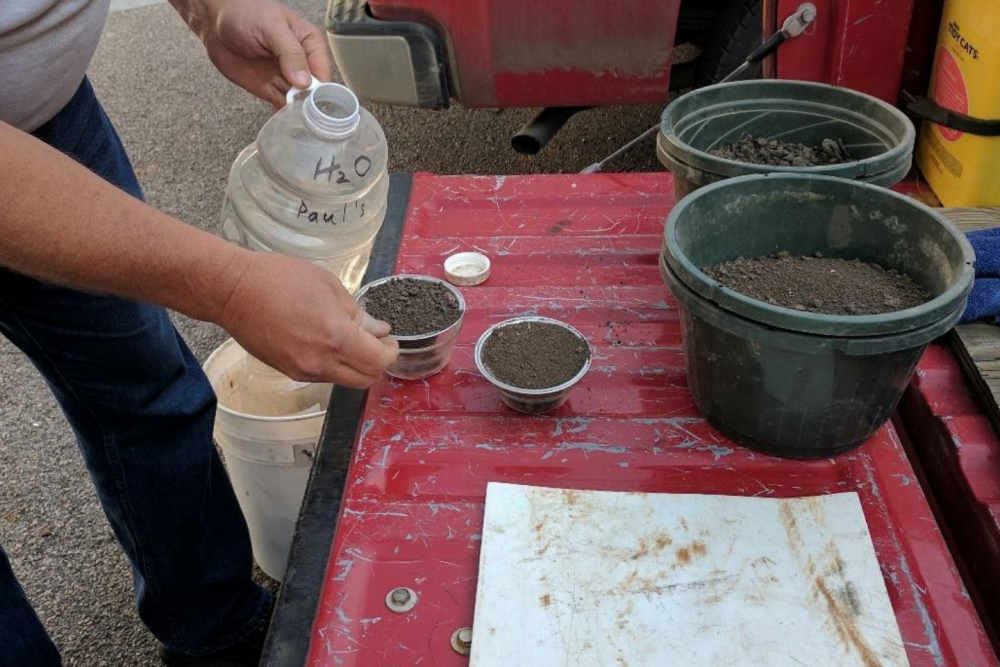Lesson

Resource Summary
Summary
This EPA-funded, standards-aligned unit presents students with a real-world challenge of sustainably using limited natural resources to produce food, fiber, and fuel for a growing human population.
High School
Classroom Instruction
At-Home Instruction
Life Sciences
Technology
Engineering
Lesson
Systems Thinking
Informed Decision Making
Food
Energy
Water
Overview
The unit integrates life and earth science concepts with engineering challenges to support students in designing a sustainable food production plan for a farm or garden. Throughout the unit, students will engage in science and engineering practices in order to investigate farming practices and their impact on water, soil, and energy use. Impacts explored will include local farming systems and global Earth systems.
Unit Challenge- As an end of unit assessment, students will design a sustainability plan for a farm or garden system. Students will use what learn throughout the unit about farming practices and their impact on sustainability to design the plan.
- This lesson introduces a basic system, its components, and their role in stability or change of system balance. The foundational vocabulary introduced in this lesson will prove helpful in discussing farming systems and sustainability throughout the remainder of the unit.
- This lesson provides students an opportunity to explore farms as systems by beginning to map farm components and their relationships. Students play a city farm game with the goal of being economically and environmentally sustainable over a 5-year period. Students will analyze and interpret data from this game to calculate cost-benefit ratios, efficiency, and a measure of natural resource protection.
- This lesson introduces students to a real-world, online tool for measuring sustainability in a farming system. Students will learn about the seven metrics of the Fieldprint Calculator, learn how a Fieldprint is created, and analyze and interpret a Fieldprint to determine areas of most and least concern. Students will take part in an activity to identify farming actions or decisions which can affect sustainability metrics for a farm system.
- In this lesson, students will explore a variety of case studies to learn about farming practices that have been successfully implemented to solve real-world agricultural challenges. Students will examine evidence from a single case study to determine values held by the farmers that influence their sustainability decisions.
- In this lesson, students will design, evaluate, and refine a center pivot irrigation system to improve water efficiency in a field and reduce the impacts of agriculture on the environment.
- This lesson presents students with three real-world phenomena. Students then witness a classroom demonstration (a rainfall simulator to explore flooding) and perform two investigations of soil (creating soil mud pies to compare soil structure and the “clod” test to explore soil erosion). Student observations of water-soil interactions from these investigations provide the foundation for scientific explanations of why these phenomena occur.
- This lesson provides students the opportunity to explore where carbon is stored in Earth systems and farming systems as well as how it moves between global carbon reservoirs. Students will learn how sustainable soil management practices can increase organic matter in the soil, increase carbon sequestration, and decrease greenhouse gas emissions.
- This lesson introduces students to one of the largest energy inputs in farming- the creation of synthetic nitrogen fertilizer. Nitrogen fertilizer is used in farm settings to maximize crop production and is the focus of this lesson.
Curriculum Connections
Next Generation Science Standards
Unit Challenge
- HS-ETS1-1. Analyze a major global challenge to specify qualitative and quantitative criteria and constraints for solutions that account for societal needs and wants.
- HS-ETS1-2. Design a solution to a complex real-world problem by breaking it down into smaller, more manageable problems that can be solved through engineering.
- HS-ETS1-3. Evaluate a solution to a complex real-world problem based on prioritized criteria and trade-offs that account for a range of constraints, including cost, safety, reliability, and aesthetics, as well as possible social, cultural, and environmental impacts.
Lesson 2
- HS-ESS3-3. Create a computational simulation to illustrate the relationships among management of natural resources, the sustainability of human populations, and biodiversity.
Lesson 5
- HS-ESS3-4. Evaluate or refine a technological solution that reduces impacts of human activities on natural systems.
Lesson 6
- HS-ESS2-2. Analyze geoscience data to make the claim that one change to Earth’s surface can create feedbacks that cause changes to other Earth systems.
Lesson 7
- HS-ESS2-6. Develop a quantitative model to describe the cycling of carbon among the hydrosphere, atmosphere, geosphere, and biosphere.
- HS-ESS3-4. Evaluate or refine a technological solution that reduces impacts of human activities on natural systems.